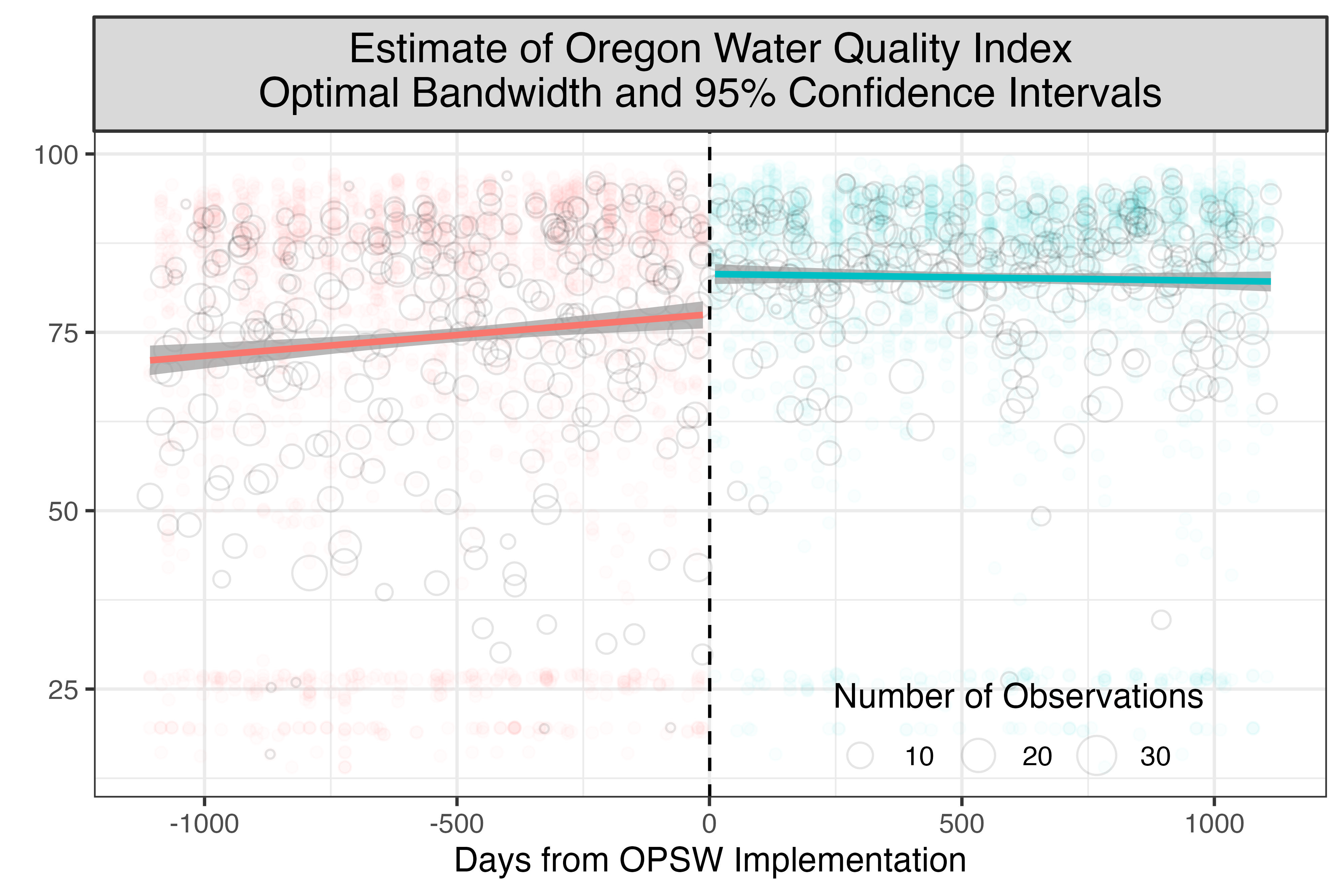Abstract
Cross-boundary collaboration is a common strategy used to address environmental issues, but scholars do not yet fully understand what makes a difference in the outcomes of externally directed collaborations. To fill this gap, we examine whether a piece of state legislation that authorizes collaborative watershed restoration projects improves water quality. Using Oregon data from 1980 to 2021 and a regression discontinuity in time design, we find a 5 percent improvement in water quality after the legislation was enacted. Furthermore, our longitudinal analyses show that network properties and management within collaborative projects are key mechanisms underlying this improvement. In general, networks led by collaborative governance regimes and local governments are more effective than those led by citizen groups or state agencies. However, state agencies show the strongest capacity to manage increasing project goals. These findings underscore the importance of institution design and network governance in achieving successful environmental collaboration.
Figure 5: RDiT estimate of the legislation effect on water quality
